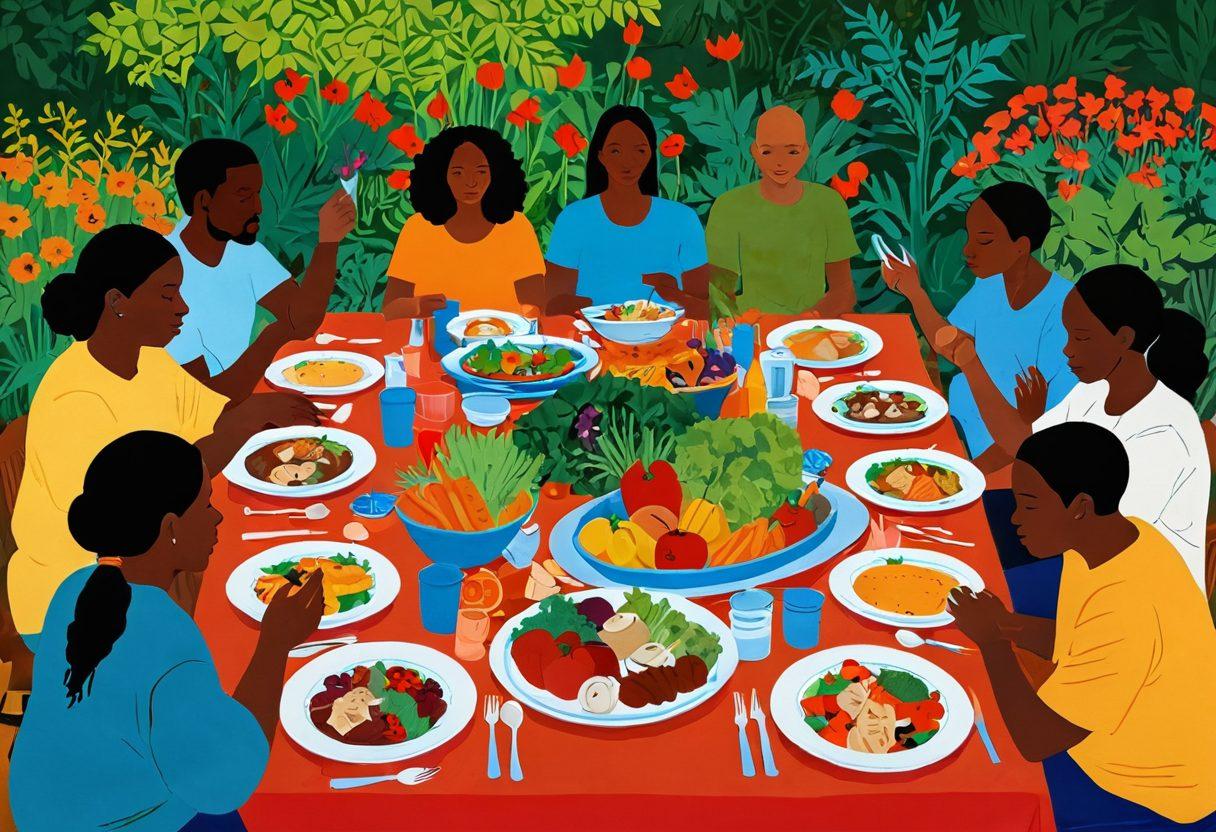Navigating the Hunger Narrative: Crafting Meaningful Articles on Food Scarcity and Wellness
Food scarcity is a narrative whispering through the world’s corners, bringing tales of starvation, deprivation, and resilience. When you think about the struggle for food, does it not evoke an emotional response? Imagine a child staring at a plate filled with nothing but air, the desire for food evident in their wide eyes. The stories behind food scarcity reveal so much more than hunger; they unveil the profound relationship we have with nutrition and wellness. So how can we unpack these heartfelt stories and transform them into meaningful articles that inspire real change?
As we dive into the depths of food scarcity, we are faced with pressing questions: What does a life shaped by malnutrition look like? How does hunger impact not just the body, but the soul? In our quest to explore these topics, a powerful tool at our disposal is the weblog. This online journal can serve as a bridge between those who experience hunger and those who read about it. By articulating the narratives of those affected, we drive awareness and evoke empathy, igniting the desire for sustainable solutions.
The narratives surrounding food scarcity echo the challenges faced in countless regions worldwide. From famine to malnutrition, the tale unfolds against the backdrop of systemic issues like poverty, climate change, and inequitable access to resources. It’s essential to highlight how these matters interlace, forming a complex web that contributes to the struggle for food. Encouraging healthy eating and a focus on nutrition isn’t merely about individual choices; it’s about understanding the systemic roots of food deprivation. What stories come to mind when you think of those battling these daily struggles?
Crafting articles that resonate means not just presenting facts but telling the stories of real people and real lives. Discussing the profound impact of starvation, malnutrition, and deprivation invites readers to reflect on their privileges and responsibilities. It’s about connecting the dots—showing how the need for food and the desire to eat are universal experiences, yet they reflect such diverse realities. What are the actionable steps we can take to transform this narrative? We can advocate for better policies, support local agriculture, and drive conversations around sustainable food practices, all while sharing these compelling stories through our content platform.
Furthermore, let’s broaden our perspective—food scarcity is not merely an issue in developing countries. It’s a global crisis. As we generate articles that spotlight sustainability, we also show that wellness should involve everyone. The food we consume is a reflection of our values, and intentional choice fosters communities championing healthy eating habits. By embarking on a journey through these narratives, we unite around a shared goal: a world where everyone has access to not just a meal, but nutritious and fulfilling food. Let us continue posting these impactful stories, utilizing our voices to advocate for change where it is desperately needed.
Wellness Through Understanding: The Intersection of Hunger Narratives and Healthy Eating
In an increasingly interconnected world, the balance between food scarcity and wellness remains a critical conversation. Every day, millions grapple with their own hunger narratives that intertwine with the idea of healthy eating. What does it mean to engage with these narratives, especially when starvation isn't just a statistic but a lived reality for many? This is where our journey begins—right at the intersection between the pressing need for food and the desire for nutritious sustenance. Understanding this intersection not only enriches our online journal or weblog but also empowers us to create articles that spark awareness and foster change.
Imagine sitting at your dining table, contemplating your next meal. Do you perceive it solely as a source of sustenance or as a complex narrative entwined with your well-being? Each bite carries stories of food scarcity and malnutrition, revealing the layered history of cultures, economies, and personal choices. When we delve into our diaries, we can choose to reflect these realities. Are we merely refueling our bodies, or are we actively engaging in a narrative that reflects our values, desires, and the world's pressing issues?
The stories we share through our content platform go beyond mere anecdotes; they become essential tools for empathy. By understanding hunger and deprivation, we gain a lens through which we can view our own eating habits. Wellness isn't just about avoiding famine; it's about cultivating a thoughtful diet that honors our bodies and reflects our collective responsibility toward sustainable food. Could our choice of foods lead to a new narrative that embraces both health and compassion?
As we're posting articles that highlight the connection between hunger and wellness, let's consider the powerful implications of nutrition. What if sharing a little about our dietary preferences could influence someone's understanding of food security? If we encourage families to embrace healthy eating while acknowledging those facing food scarcity, we not only inform but also inspire action. Such narratives can ignite passion for sustainable food practices, urging individuals to take steps toward making a difference.
At the end of the day, understanding the hunger narrative enriches our sense of community, urging us to rethink our relationships with food. As we sit down to write our next journal entry or brainstorm new content for our weblog, consider the subtle but impactful ways in which we can shape others' perceptions. Can we be the voices that highlight the stark realities of malnutrition while celebrating the joys of nourishing, delicious meals? With every article we share, we have the ability to weave a tapestry of hope, resilience, and understanding.
Crafting Compassionate Content: How to Address Malnutrition and Food Deprivation in Your Articles
In today's world, where food scarcity and malnutrition persist as critical challenges, crafting compassionate content becomes an increasingly vital endeavor. How do we weave stories that resonate with readers, capturing the stark realities of hunger while instilling hope for change? By thoughtfully addressing food deprivation and exploring the intricate relationship between wellness and nutrition, we can empower our audience to understand not just the facts, but the human experiences behind these statistics. This journey toward compassionate content requires a blend of storytelling and actionable insights that promote healthier eating and sustainable food practices.
Imagine sitting down to write in your online journal, reflecting on the struggles of those facing starvation and malnutrition. Each article you craft has the potential to amplify voices that often go unheard, offering a powerful narrative that ignites the desire for food and nutrition justice. As you pen your thoughts, ask yourself: How can my words inspire change? By sharing real-life stories of families battling food scarcity, you evoke empathy and move readers to not just consume content, but to engage with it meaningfully. Remember, behind every statistic lies a human story waiting to be told.
Engaging your audience through relatable narratives can transform a simple weblog post into a catalyst for awareness. Consider incorporating quotes from individuals affected by famine or experts in nutrition, presenting a multitude of perspectives that paint a vivid picture of the crisis at hand. When you bring in voices from the community, it shifts the conversation from mere data points to a heartfelt dialogue about the need for food security. Your role as a content creator is not just to inform, but to invite readers into an ongoing conversation about wellness and the importance of sustainable food choices, challenging them to rethink their views on hunger and deprivation.
As you craft your articles, focus on actionable content that encourages readers to participate in the solution. From advocating for community gardens to supporting local food banks, every posting can serve as a call to action. Ask your audience thought-provoking questions: How can we collectively tackle the issue of nutrition in our communities? What small changes can we make in our diet to support those facing food scarcity? By steering the narrative towards solutions, you foster a sense of responsibility and agency, showing that each of us has a role to play in combating hunger.
In closing, remember that addressing malnutrition and food deprivation is not just about presenting grim statistics but also about illuminating pathways to wellness. As you embark on your writing journey, keep in mind the delicate balance between storytelling and education. Your articles can be more than mere information; they can be inspiration, igniting a collective effort towards healthier eating, enhanced nutrition, and sustainable food practices. Together, we can rewrite the hunger narrative, transforming it from one of despair into one of hope and action.


